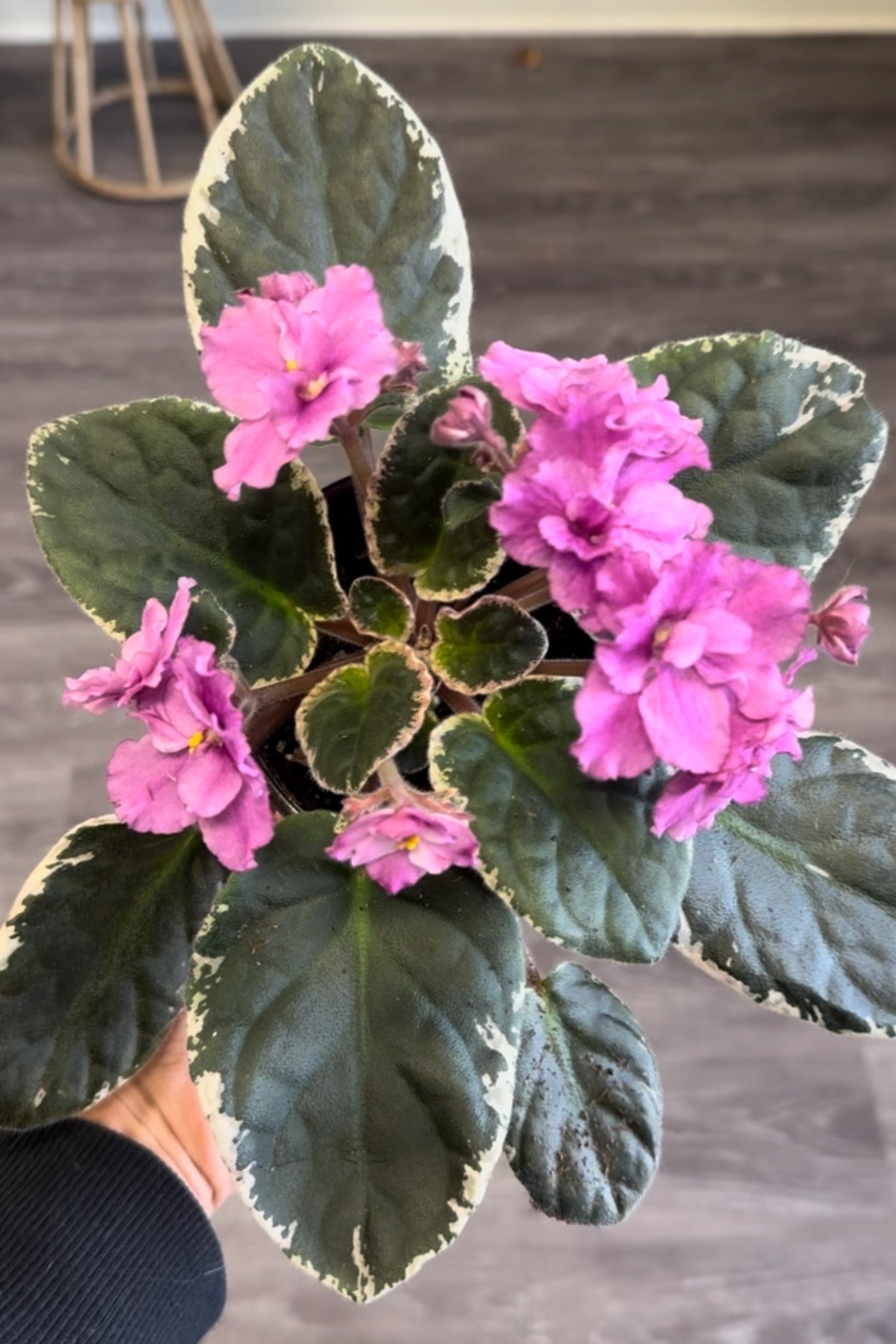African Violet Plant Care guide
African Violet Plant Care: Your Guide to Thriving Blooms
If you are in your flowering plants era then the African Violet is a must have! African violets (Saintpaulia) are beloved houseplants known for their vibrant blooms and fuzzy leaves. Despite their delicate appearance, these beauties are relatively easy to care for with the right knowledge. Here's a comprehensive guide to help your African violets flourish.
Light
African violets thrive in bright, indirect light. Direct sunlight can scorch their leaves, while insufficient light can hinder blooming. Place them near a north or east-facing window. If natural light is limited, fluorescent lights placed 12-15 inches above the plants can provide the necessary illumination.
Watering
Watering African violets correctly is crucial. They prefer to be kept evenly moist but not waterlogged. Use lukewarm water to avoid shocking the roots. It's best to water from the bottom by placing the pot in a shallow dish of water for about 30 minutes. This method prevents water from sitting on the leaves, which can cause spotting or rot. Allow the soil surface to dry out slightly between waterings.
Humidity
African violets enjoy a humid environment. If your home is dry, especially in winter, increase humidity by placing a humidifier nearby or setting the pots on a tray filled with pebbles and water. Ensure the pots sit on the pebbles and not directly in the water to avoid root rot.
Soil and Potting
These plants prefer well-draining soil. A mix specifically formulated for African violets or a homemade blend of peat moss, vermiculite, and perlite works well. Repot your African violet annually in fresh soil to provide essential nutrients and avoid compacted soil.
Fertilizing
Fertilize African violets regularly to promote blooming. Use a balanced, water-soluble fertilizer formulated for African violets every 4-6 weeks in Spring and Summer season. Avoid over-fertilizing, as it can lead to salt buildup in the soil and harm the plant.
Pruning and Maintenance
Regularly remove spent flowers and damaged leaves to encourage new growth and maintain the plant's health. Grooming your plant also helps prevent pests and diseases.
Temperature
African violets prefer a consistent temperature range between 65°F to 75°F (18°C to 24°C). Avoid exposing them to drafts, sudden temperature changes, or temperatures below 60°F (16°C), as these conditions can stress the plant.
Common Issues
Yellow Leaves: Often a sign of overwatering or poor drainage. Adjust watering habits and ensure the pot has proper drainage.
No Blooms: Could be due to insufficient light, incorrect fertilizing, or temperature stress. Ensure your plant is receiving adequate light and follow a regular fertilizing schedule.
Powdery Mildew: Increase air circulation and avoid getting water on the leaves. Treat affected plants with a fungicide if necessary (My go to is Neem Oil. Any brand will do). Checking for pests during your weekly watering schedule will help catch
Caring for African violets can be a rewarding experience, providing a touch of elegance and color to your indoor space. By following these care tips, you can enjoy healthy plants and abundant blooms. Happy gardening!


